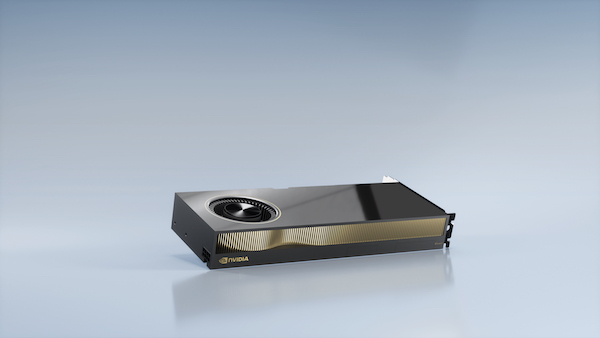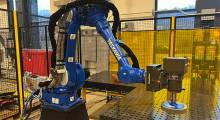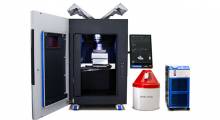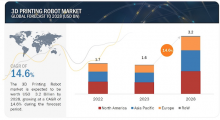At the virtual GTC conference this week NVIDIA gave attendees a first look at the new NVIDIA RTX A6000 and NVIDIA A40 GPUs.
The GPUs are built on the Ampere architecture and feature new RT Cores, Tensor Cores and CUDA cores that can accelerate graphics, rendering, compute and AI significantly faster than previous generations.
“The ability to double or triple the resolution and vastly accelerate our real-time visualization of massive, complex building models in cityscapes with the NVIDIA RTX A6000 is super impressive,” said Paul Renner, visualization manager at Kohn Pedersen Fox Associates, one of the world’s largest architecture firms.
“Creating the next generation of passenger cars requires design perfection and a relentless pursuit of aesthetic beauty,” said Guillaume Shan, who works in Computer Graphics and Visualization Solutions at automaker Groupe Renault. “The Renault design team constantly pushes the boundaries to use every tool at our disposal. We have always relied on NVIDIA technology to review design concepts in ray-traced photorealism. The new NVIDIA RTX A6000 has exceeded our expectations and shown performance gains of over 2x with ray-traced exterior scenes. It’s quite impressive.”
Other early adopters of the new GPUs include Predator Cycling, which is evaluating the NVIDIA RTX A6000 to accelerate design processes. Performance gains of 2-6x across a number of key applications give the team the power to simultaneously run analysis, modeling and screen-sharing on a video call. Architectural design firm HKS says the RTX A6000 can enable receipt of near instantaneous feedback on design changes while running simulations in real time.
According to NVIDIA, both new GPUs benefit from the following features:
- Second-Generation RT Cores: Delivers up to 2x the throughput of the previous generation, plus concurrent ray tracing, shading and compute.
- Third-Generation Tensor Cores: Provides up to 5x the throughput of the previous generation, up to 10X with sparsity, with support for new TF32 and BF16 data formats.
- New CUDA Cores: Delivers up to 2x the FP32 throughput of the previous generation for significant increases in graphics and compute.
- 48GB of GPU Memory: The largest memory available in a single GPU, expandable to 96GB using NVLink to connect two GPUs.
- Virtualization: With the addition of NVIDIA virtual GPU software such as the NVIDIA Virtual Workstation the new chips can support graphics workloads and powerful virtual workstation instances at scale for remote users.
- PCIe Gen 4: Provides twice the bandwidth of the previous generation, accelerating data transfers to the GPU for data-intensive workloads like data science, hybrid rendering and video streaming in PCIe Gen 4-enabled servers and workstations.
Luxion, makers of the KeyShot product visualization tool, claims that tests have show close to triple the performance using the NVIDIA Ampere architecture. The integrated benchmark in the KeyShot Viewer reached 34.7 on the NVIDIA RTX 6000 and 88.8 on the NVIDIA RTX A6000. In the upcoming KeyShot 10 release, the performance on the A6000 was even better at 95.6, which indicates the A6000 is 95.6x faster than the CPU baseline.
RTX A6000-based workstations are expected next year from BOXX, Dell, HP and Lenovo, among others, according to NVIDIA. Likewise, A40-based servers are expected from Cisco, Dell, Fujitsu, Hewlett Packard Enterprise and Lenovo.
The NVIDIA RTX A6000 will be available from channel partners including PNY, Leadtek, Ingram Micro, Ryoyo and on nvidia.com starting in mid-December. Both GPUs will be available from OEM workstation and server vendors worldwide starting early in 2021. Support for NVIDIA virtual GPU software, including NVIDIA Virtual Workstation, will be available early next year.
About the Author
Press releases may be sent to them via [email protected]. Follow Robotics 24/7 on Facebook
Follow Robotics 24/7 on Linkedin
Article topics
Email Sign Up
















